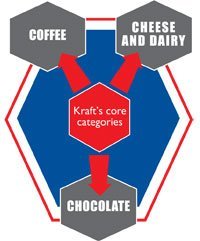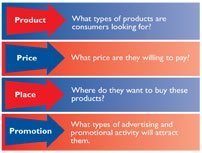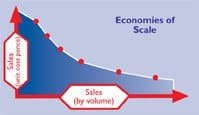Kraft Foods Inc. is the world’s second-largest food and beverage company with revenues in 2005 of over $34 billion. Kraft Foods is classified as a Fast Moving Consumer Goods (FMCG) company. FMCGs have very high unit sales and require frequent restocking. The supermarket shelves on which the products are placed are said to experience a high rate of sale.

Kraft is an American-owned company with brands that include global market leaders. Many are established household names. In the UK & Ireland Kraft’s portfolio of products fall into several core categories.
Modern food and beverage companies build their success around their power brands – the fast-selling brands that are instantly recognisable to consumers. In the UK & Ireland, Kraft’s power brands are:
- Kenco®
- Philadelphia®
- Dairylea®
- Terry’s Chocolate Orange®.
The company’s other major brands include Maxwell House® coffee, Terry’s All Gold® and Toblerone® confectionery. The staying power of these brands is undisputed – some already have over 100 years of sales behind them.
In addition to having high-quality brands, Kraft’s success owes much to its talented and dedicated employees, who strive to achieve the company’s vision of ‘Helping people around the world to live and eat better.
Kraft worldwide currently has over 100,000 employees, operating in 150 different countries. The company’s UK Head Office is in Cheltenham.
Stakeholders and decision-making at Kraft

Stakeholders are individuals and groups with an interest in a company and its activities. They have a key influence on decisions that modern companies make. Examples of Kraft’s stakeholders include:
- Employees -They take pride in working for a well-respected company and look to have a secure job, good wages and other benefits and opportunities for career development.
- Customers – Organisations such as supermarkets and other retail outlets that buy Kraft products in order to sell to the end (or final) consumers.
- Consumers – Purchasers and users of Kraft products. The number of consumers exceeds the number of active buyers because, for example, within a family unit, one person may well buy on behalf of several consumers.
- Shareholders – People and institutions who own shares in companies. They share in the company’s profits in the form of dividends.
- Suppliers – Firms that supply Kraft with its production requirements e.g. raw materials, ingredients, and packaging.
This case study focuses primarily on customers and how the Sales function helps to deliver products that meet customers’ needs.
Sales and the marketing mix

All companies depend on their sales to keep them in business. The work of their Sales department or division is, therefore, crucial to the success of the business. The four Ps of Marketing are important in discovering what consumers want:
Whilst the four Ps are traditionally thought of as Marketing elements, it is within the Sales function that they really come to life. Within Sales, Kraft focuses on meeting the needs of both customers and consumers. Kraft does this by ensuring that products are always available on retailers’ shelves for consumers to purchase. The majority of Kraft’s UK Salesforce is based at the company’s Head Office in Cheltenham.

They operate in teams, each of which looks after specific customers (e.g. ASDA, Tesco, Sainsbury). Within each team, individuals are responsible for particular categories of products (e.g. cheese, coffee). This role is known as ‘Account Management.
Success in selling is built around managing particular accounts carefully. The aim is to help customers to sell Kraft products and to ensure that sales figures meet not only Kraft’s targets but customers’ targets too. Kraft strives to help customers meet increasingly demanding consumer needs in a highly competitive marketplace.
In addition to these Account Management roles, there are also a number of specialist roles within Sales. Category Planning ensures that sales targets are met by overseeing the promotional plans for each customer.
Category Development uses the market research information provided by Marketing to create a ‘sales rationale’. This is market and product knowledge that the Account Managers can share with their customers to help them sell the product. A Sales ‘Point of Purchase’ team provides expertise on Point of Purchase activity, e.g. promotional material to go on shelves such as ‘shelf talkers’ as well as planograms that depict the ideal location of the product on the shelf (e.g. eye level).

Kraft has several different types of customers. Kraft Account Managers liaise with the Head Office of each specific customer. This enables them to negotiate a deal with one key contact from each retail chain instead of with each store separately. This is more time-efficient and cost-effective. It also encourages consistency across all individual stores as they are coordinated by their Head Office.
Key aspects of Sales work

In order to achieve Sales objectives, the Sales team at Kraft needs to ensure:
- high product distribution
- agreement of the correct range for each customer
- organisation of promotions
- maximum space on the shelf
- successful launches of new products.
To have an effective Salesforce, Kraft needs to ensure its employees have certain important skills. These include:
- a good level of numeracy to analyse sales figures and ensure profitability
- good communication skills to a rapport with customers and identify their needs
- negotiation skills in order to achieve the best deal for both the customer and Kraft.
Kraft provides training to enhance each employee’s level of ability.
The role of Sales in getting the product to the consumer
The following example of the stages required to sell new product developments to customers illustrates the fundamental aspects of the sales role.
i. Creating concepts for new products

In order for Kraft to create new products or to prolong consumers’ interest in existing products, the Marketing division analyses consumer needs to generate new ideas. They then discuss these with Sales to ensure that they believe customers will buy them. Additionally, Sales may identify consumer needs by working closely with customers and will then communicate these needs to Marketing.
ii. Communicating the final concept to Sales
Marketing and Category Development equip Sales with a sales rationale to present to their customers. The Sales and the Point of Purchase departments investigate methods of ensuring the product is prominently displayed in the stores. When compiled, this package becomes Point of Purchase material.
iii. Presenting the opportunity to customers
Any new Kraft product or development will need to be ‘sold’ to customers before they will agree to stock it on their shelves. To do this the Sales team invite all the key decision makers within their customers’ organisation (e.g. buyers, merchandisers, supply chain managers) to a meeting, during which they will outline the benefits of the new product. It is vitally important that the customer sees the benefit of the product to them and to the consumer. Market research statistics will usually play a key role in illustrating the potential of the product along with persuasive rationales from the Sales team.
During the course of the meeting, the sales team will explain the key features of the product, present their evidence to show consumer needs and will attempt to show how stocking the product will encourage purchase. Key features of the product could be a different flavour, a special pack size or new ingredients, whilst evidence of consumer need will be demonstrated by the use of market research which will show how the product matches consumers’ requirements.
The brand name could be a benefit to the customer and may persuade them to stock the item. If it can be shown that consumers would be likely to visit the store specifically to buy the product because they are loyal to the brand, customers could receive the added benefit of consumers making additional purchases whilst in the store.
The advertising support that Kraft’s Marketing division has agreed for the product in order to help generate and sustain consumer interest is an additional sales tool.
Once buyers have decided that they would like to stock Kraft products, a price is negotiated as well as an in-store location and plans for special promotions. Kraft’s business model is based on building strong relationships with retailers that help Kraft to achieve business growth.
iv. Year plan for the product
Once the buyer has agreed to stock a product, Kraft Account Managers work with Category Planning and Finance to create a promotional plan and sales targets for the year for that product. It is important to ensure that all aspects of the plan are communicated to all relevant departments (e.g. Customer Services must be able to answer any customer queries) and that all products are delivered on time to meet agreed customer service levels.
v. Working with Supply Chain
Sales work closely with the Supply Chain function to inform them of estimated sales volumes in order to enable them to instruct the factory to manufacture the quantity of product required. These sales predictions are constantly reviewed in light of changing conditions to ensure their accuracy as the year progresses.

Planning is critical to make sure that customer orders are met and that the product is always available in-store. Failure to meet orders would mean a loss of profits for both Kraft and their customer and also disappointment for consumers, which could damage long-term relationships between both parties.
Kraft looks for a high volume of products sold because the higher the volume of sales, the lower the unit cost as illustrated in the diagram.
vi. Product arrives in store
Even when the product has reached the stores, the Account Manager’s role is not yet finished. Account Managers regularly visit stores to check that the product is in stock, that agreed promotions are running and that the product has the space on the shelf as negotiated.
vii. Evaluation
An important part of the Account Manager’s role is to constantly evaluate the performance of the product within customers’ stores. Aspects that are evaluated include the sale of stock compared with internal forecasts, profit made, the analysis of Kraft’s share of the market for a product and customer feedback. This information is then used to create future plans, and identify what worked well and what could be improved for next time.
Conclusion

The world of sales within an FMCG company is ever-changing. To maintain its competitive advantage and guarantee future success, Kraft recognises that it needs to develop strong relationships with its customers by working closely with them to build success for both parties.
